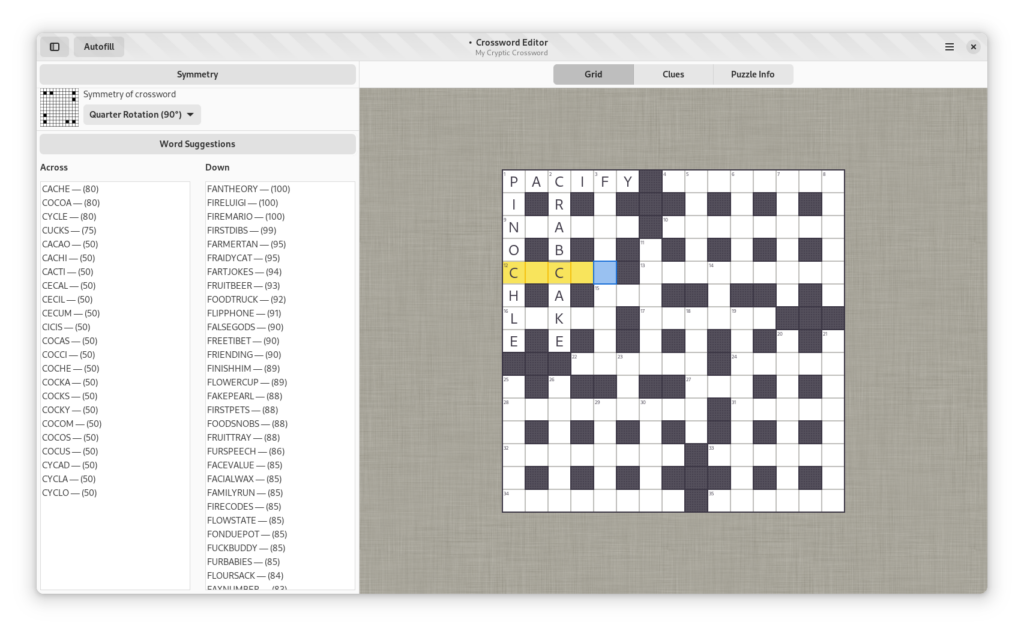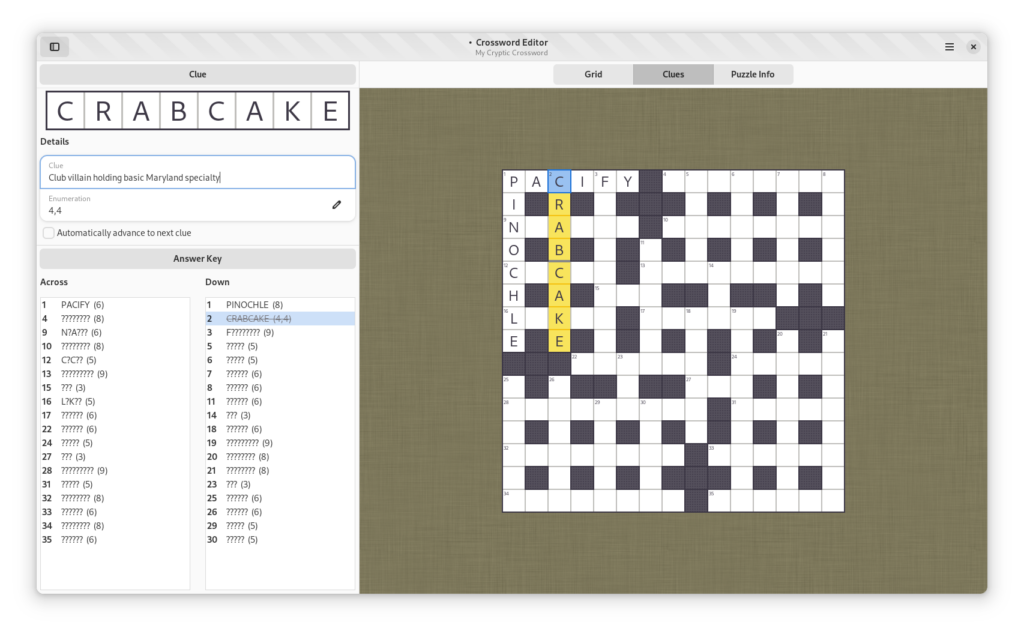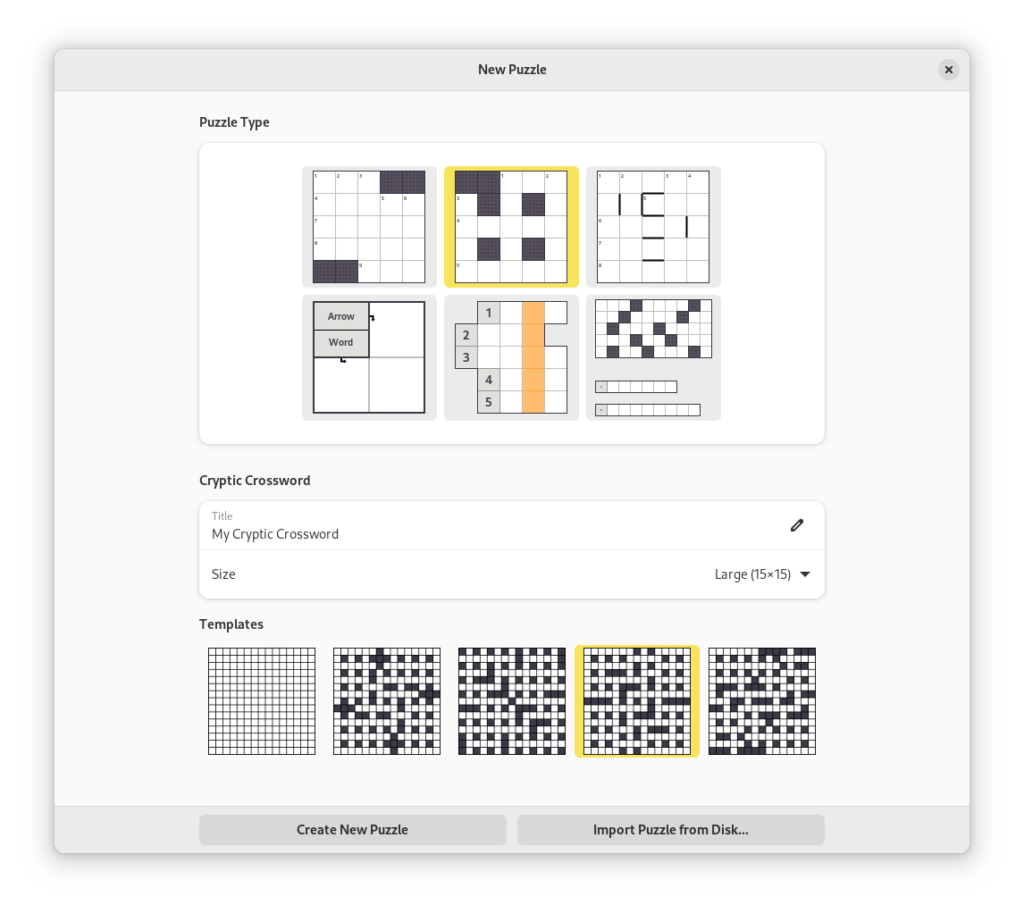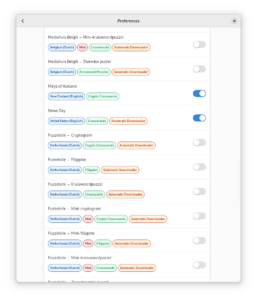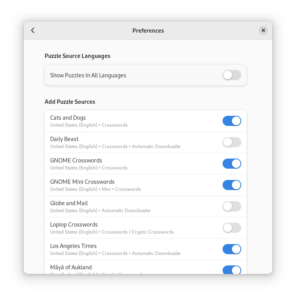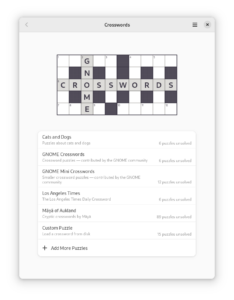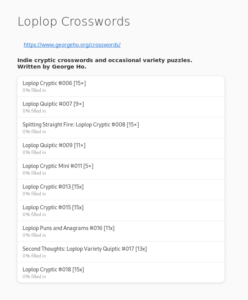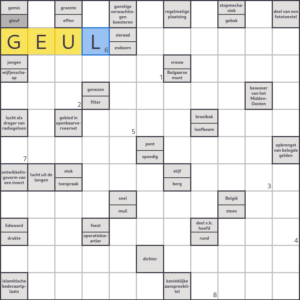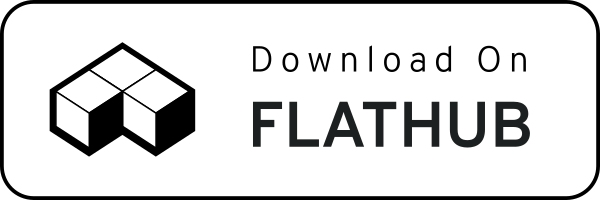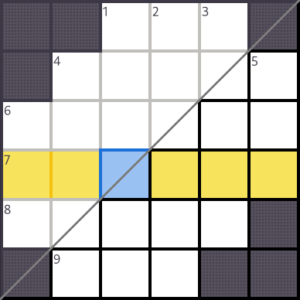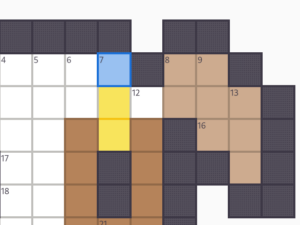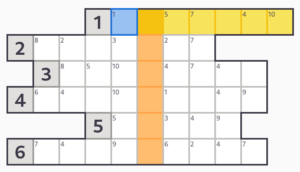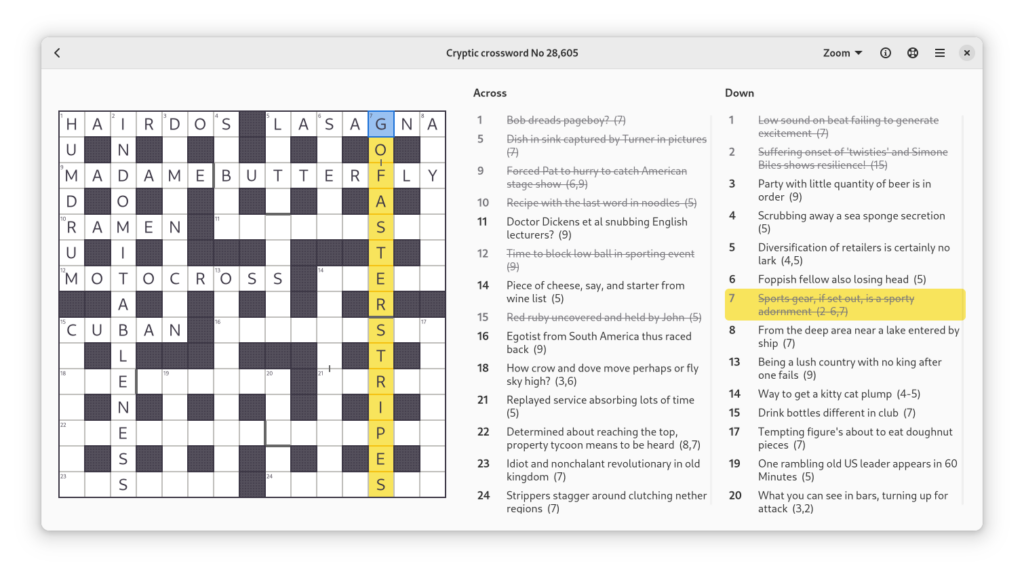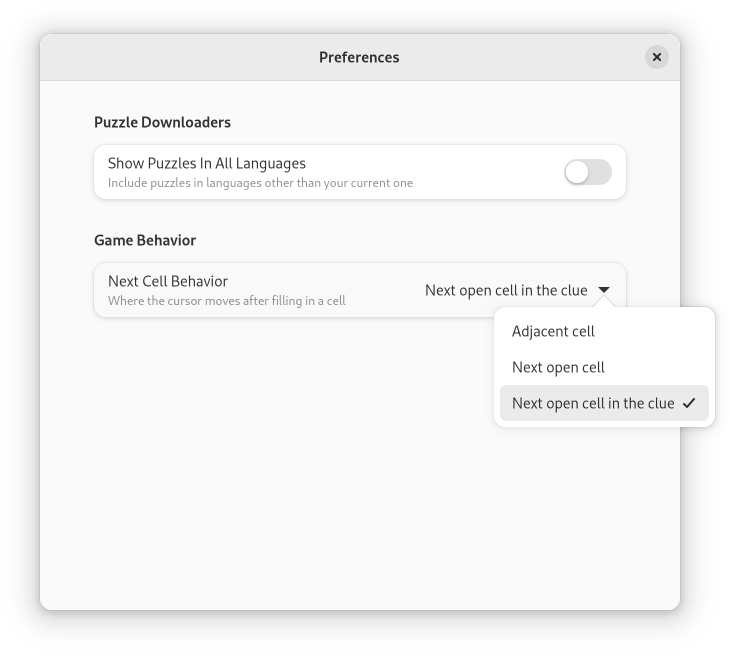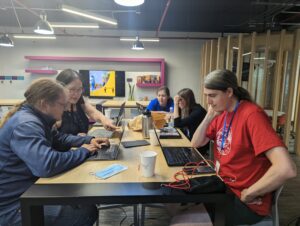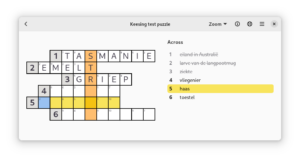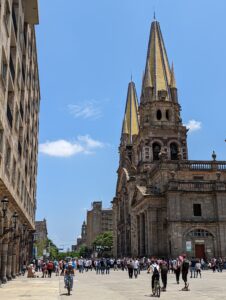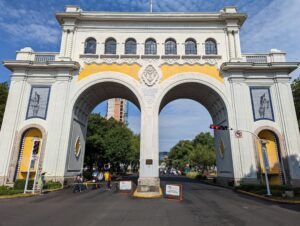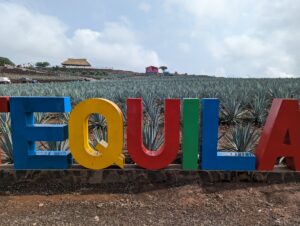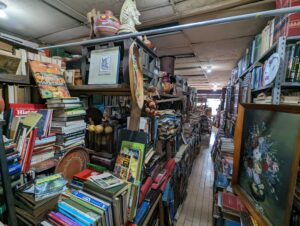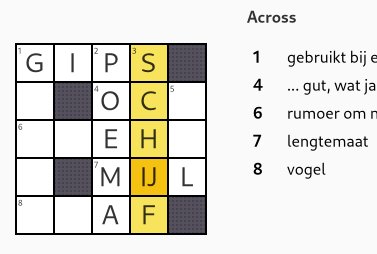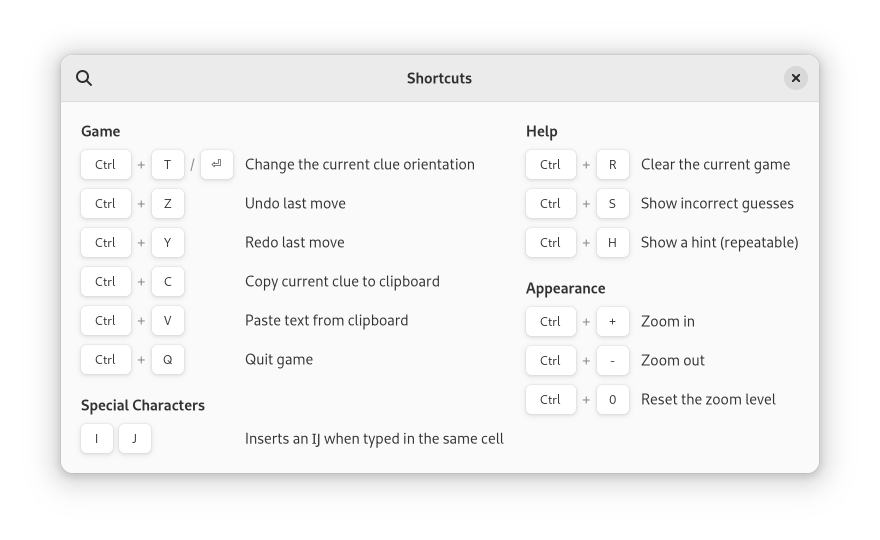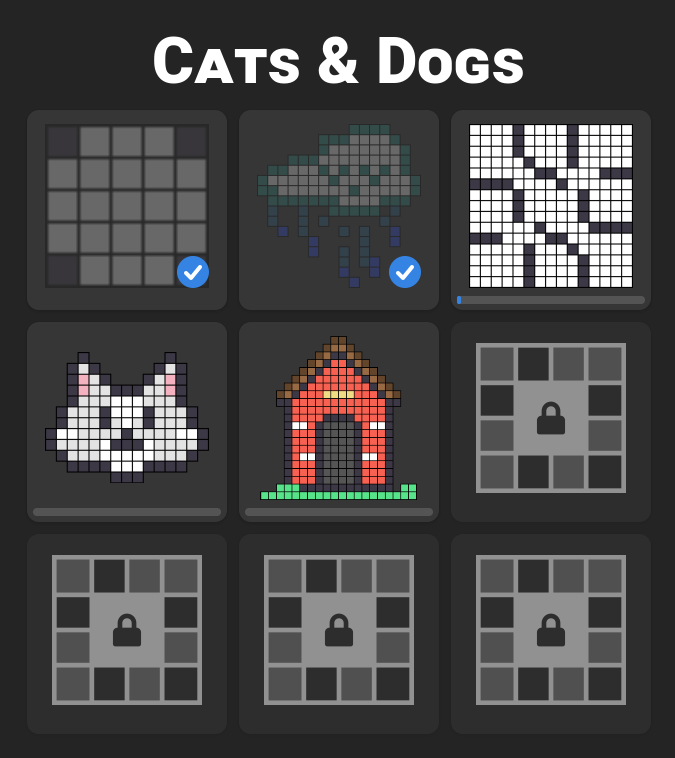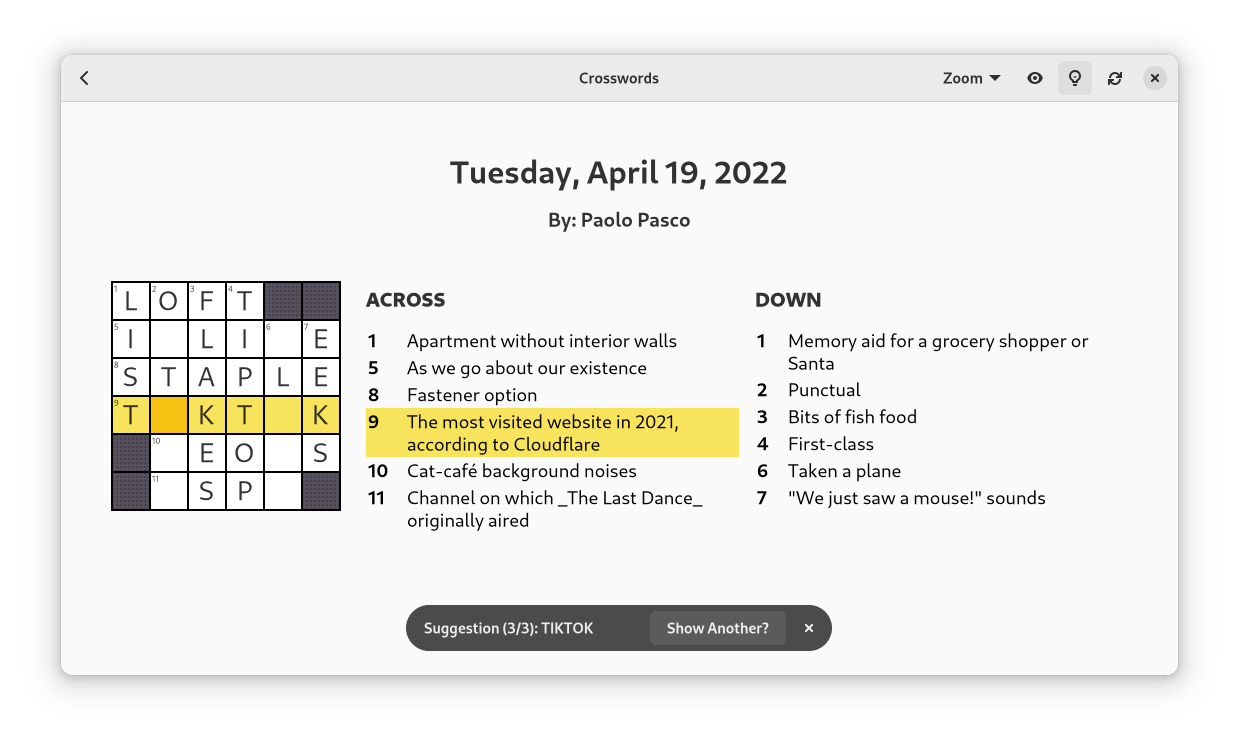Happy 2024! It’s time for the first GNOME Crosswords update of the year. A ton of work happened since the last release — primarily in the Editor. I’ll try to keep this update short and sweet. Packages will be available in flathub momentarily.
Move to libadwaita-1.4
The biggest visual change is that we moved away from libpanel in the Editor window. I found I was fighting with that library constantly due to the mode changes in the Editor, and I wasn’t able to take advantage of many of libpanel’s cooler features. Ultimately, libpanel wasn’t designed for workspaces and it looked like it would be a prohibitive amount of work to add them. Instead, I’m using an AdwOverlaySplitView, custom paned widget, and a lot of GtkStacks. This results in a cleaner appearance at the cost of a lot of flexibility. As an additional plus, it gives the Editor the snazzy two-toned look that’s currently in vogue:
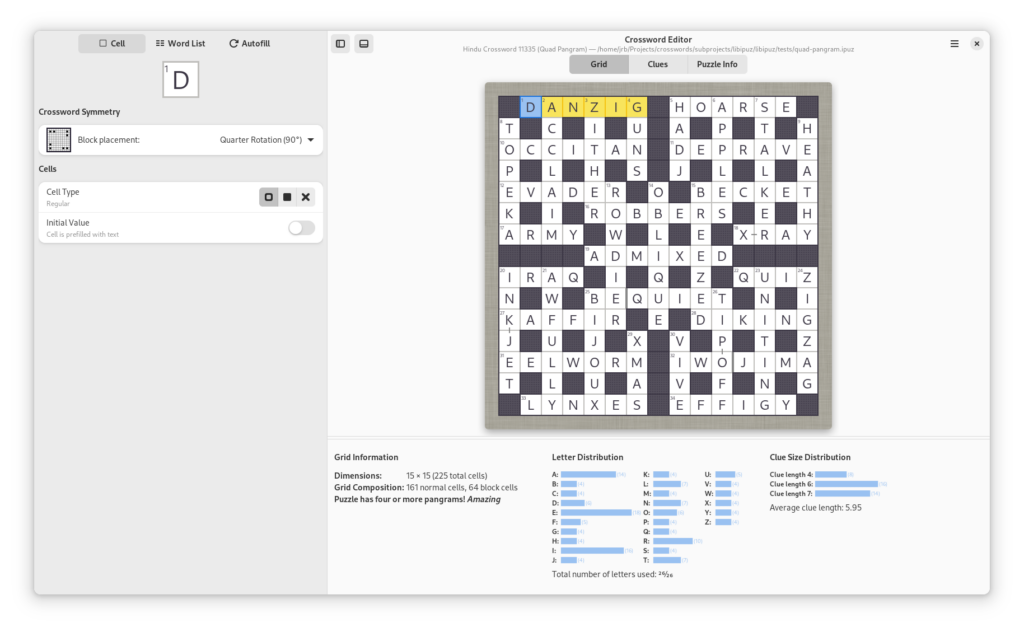 The plan for the bottom of the content section is to provide some useful information for whatever operation was being shown. I put in some rudimentary statistics about the grid, as well as some basic support for authoring clues. I added three simple sections just to get something up and running: Anagrams, Odds, and Evens. The anagram calculations was based on work done by Pratham for his GSoC project. I was able to finish it and incorporate it into the UI.
The plan for the bottom of the content section is to provide some useful information for whatever operation was being shown. I put in some rudimentary statistics about the grid, as well as some basic support for authoring clues. I added three simple sections just to get something up and running: Anagrams, Odds, and Evens. The anagram calculations was based on work done by Pratham for his GSoC project. I was able to finish it and incorporate it into the UI.
Also, note that the histogram bars are rendered via GtkLabels with repeated block characters (U+2588). Thanks to Christian for that great suggestion — it was a quick way to get something visible.
 Stateless Apps
Stateless Apps
For this release, we fully embraced a stateless control flow for the Editor. Federico and I have been talking about this for a while and it took some experimenting to find a model that works well. But given the complexity of the app (data and flow), it ended up simplifying the codebase substantially.
A neat example of why this is useful: there are three distinct grids in the main content section for each stage (GRID, CLUES, and STYLE). Instead of using the traditional GtkStack to swap between them, I’m able to simply swap out the state to render the correct one.
What’s next?
Word data
It’s become clear that the most important feature needed for the editor to be competitive is to improve the word list and the clue authoring section. Both the data and the filtering code need to be revisited. The word list code was originally written just for the autofill dialog and had to be fast for that. But as it’s progressed we’ve needed a lot more flexibility with the filtering. I don’t want to implement full regexp support as it won’t be fast enough, but something like nutrimatic might be more warranted (though it can be slow as well).
The data, too, needs attention. The Broda word-list is serviceable, but provides options that aren’t appropriate for all puzzles. A co-worker pointed me to the free wordnik wordlist, which I was able to add as a compile-time alternative. Libreoffice also has its own wordlists, though they aren’t designed for puzzle writing. But beyond the words, I’m going to need:
- Definitions of words
- Synonyms of words
- Multi-word combos (along with punctuation)
- Word frequency counts, to give prioritization to words/phrases
- Offline support. As much as possible, not requiring network access is preferred
In addition, to the extent there’s interest, I’d love to support this in other languages beyond English.
I know there are a number of options for these already for free desktops. If you work in this space (or are interested in seeing GNOME’s options improved here) drop me a line.
Acrostics
I also want to highlight that Tanmay has continued to work hard on Acrostic support long after his GSoC internship ended. Not content with just adding acrostic support to the game, he has been adding acrostics to the Editor as well. It’s turned out to be quite a hard problem, with a lot of algorithmic complexity involved with auto-generating the grid in a reasonable amount of time. It has also required him to fix issues all over the codebase (including in glib!) Great work, Tanmay!
Thanks
- Christian for libpanel advice and that cute histogram trick
- Federico for helping me reason about complexity, CI fixes, and translations
- Tanmay for tests and charset work (and future Acrostic work)
- Pratham for anagram support (GSoC)
- Rosanna for wording and UX suggestions
- Davide for doc fixes and translations
